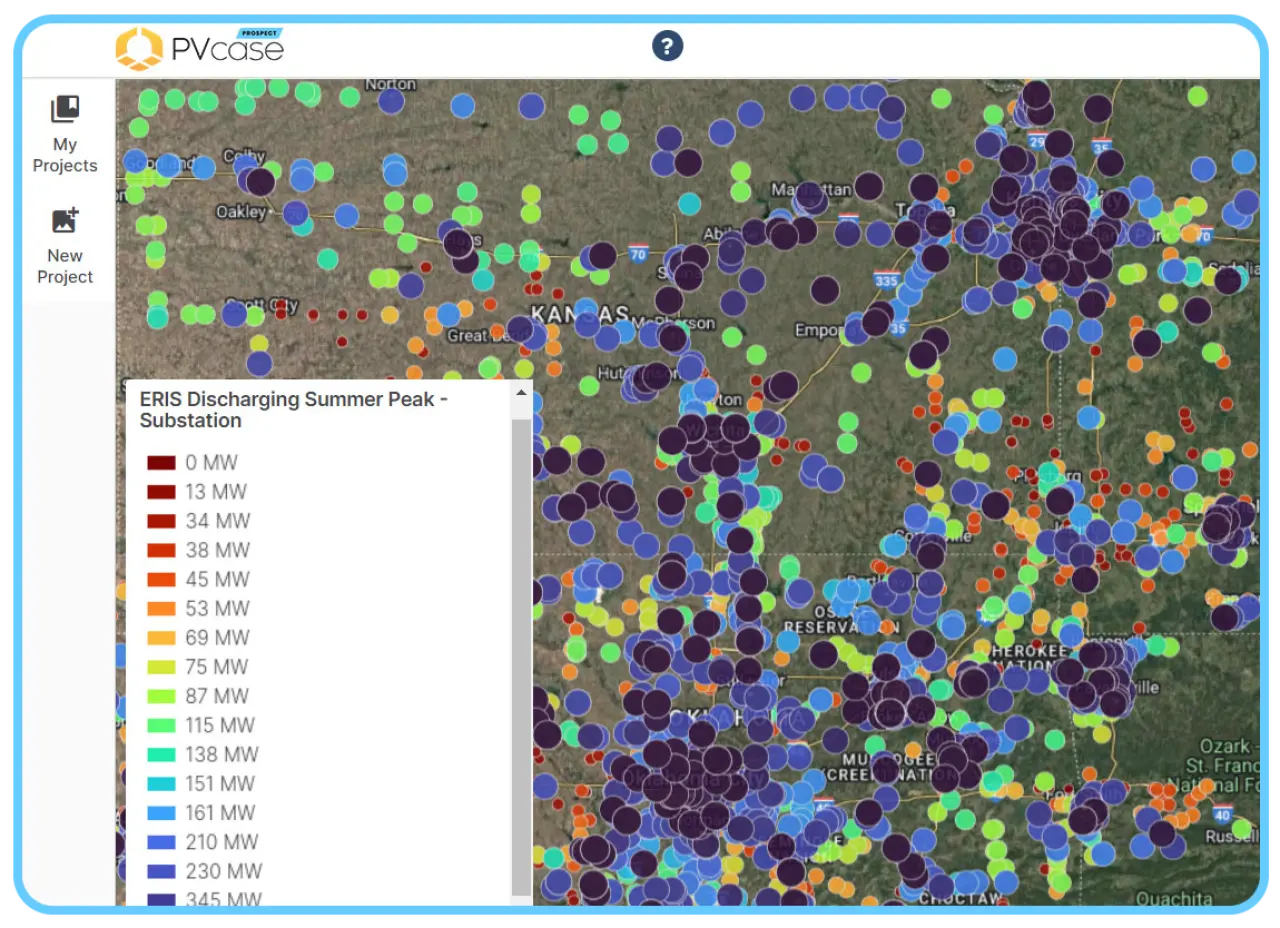Understanding the importance of siting with Capacity information


A typical story for developers involves facing issues around available transfer capacity. Often, after spending several hours and plenty of money on a potential project, their interconnection point will lack the available headroom capacity to either inject or withdraw power from the grid. This creates several problems, where the developer is then faced with massive network upgrade costs or constraints that block progress. Hence, they’re forced to withdraw the project from the queue.
And what about several grid operators that require application fees for each proposed megawatt of power? With the increasing backlog and power demand in the grid, sometimes these unfortunate results can come much later than anticipated. Ultimately, issues like these create a barrier to entry that counteracts the industry’s and climate’s need for growth in renewable energy.
That’s why, in this article, we'll explore why understanding siting Capacity information is essential. You'll find out what Capacity is, why it matters, and how PVcase offers solar developers a tool that makes a real difference.
Understanding the grid
With challenges like insufficient transfer capacity, costly network upgrades, application fees, and delayed outcomes in mind, it’s more important than ever to have a methodological plan around the grid and understand its capacity. This is where capacity analyses, usually conducted through a consultant, come into play.
Capacity analyses can take various forms, but their core purpose is to estimate the available headroom capacity at a specific point of interconnection. They also assess how much additional generation or load the electrical distribution system can accommodate.
These studies can be conducted in multiple ways, but they typically involve acquiring information from a grid operator, developing additional assumptions from various data forms, and using industry-standard software for modeling.
Once these results are generated, which often takes several weeks, a developer gains confidence — or deterrence — regarding their project's feasibility at a specific point of interest. Unfortunately, without upfront information about the point of interconnection, developers can end up spending money on costly capacity studies, only to discover that significant electrical infrastructure upgrades or constraints prevent them from meeting their injection or withdrawal targets. This creates a vicious cycle where money is spent merely to uncover the project's infeasibility. Typically, these capacity studies occur after selecting the project site. However, if capacity could be assessed at the start of the siting selection process, these issues could be avoided altogether.

Accessing capacity information upfront
Accessing capacity information upfront has historically been challenging due to several issues, such as: geolocating the data, organizing complex information concisely, and managing the varied skill sets across different teams. With thousands of points of interconnection across the U.S., each location holds a wealth of data, making it time-consuming and expensive to develop capacity studies for every point of interest. This information is vast and complex, posing difficulties in presenting it clearly and concisely. Additionally, processing these studies requires technical expertise that can sometimes be overlooked. Thankfully, PVcase Prospect has tackled all these challenges effectively.
Best practices
PVcase's Capacity Information is developed using best practices and comprehensive studies. By employing an N-1 capacity study that goes deeper than a cursory overview of the grid, the modeling accounts for queued projects, transmission upgrades, and retirements, all processed through industry-standard software. This approach offers a forward-looking perspective of the grid with geolocated points of interconnection. Within the platform, any user — be it a developer, engineer, or intern — can explore various points across different modeled scenarios. The straightforward data filtering enables them to identify the optimal point of interconnection for their project.
Final thoughts
Simply put, if developers aren't utilizing capacity information upfront, they're not addressing the grid's bottlenecks. This oversight can lead to unscalable pipeline goals and misalignment among development, land assessment, and transmission teams, hindering financial and long-term project success.
At PVcase, we're committed to empowering you to move forward confidently with your points of interest. Discover how PVcase Prospect’s Capacity data can accelerate your success and streamline pipeline generation. Schedule a demo with one of our professionals to learn more.